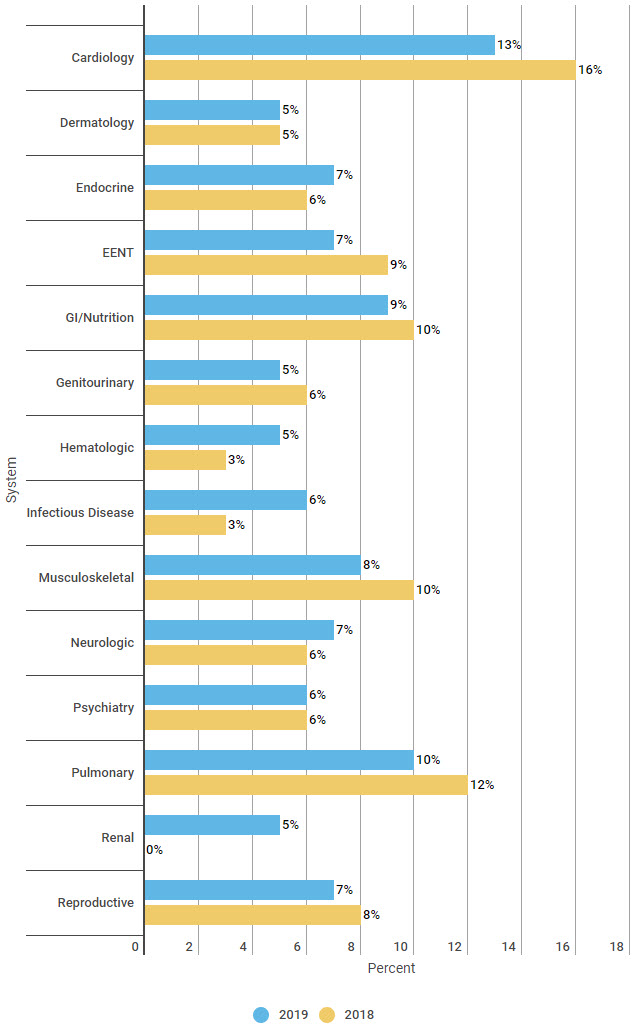The NCCPA has updated the PANCE Content Blueprint for 2019!
With the update came some changes here on my SMARTYPANCE Board Review Website and your board review checklist which I will be discussing in detail here.
NCCPA PANCE Content Blueprint 2019 vs. 2018
The Big Changes
The biggest change comes in the form of a new renal system section as an offshoot of the GU section. The GU section which was previously 6% is now 5% and the new renal section constitutes 5% of the PANCE exam.
This means there is more GU on the exam. Exciting for the lovers of acid-base, but somewhat sad for the rest of us.
A second big change has to do with how the blueprint covers neoplasms, for example, in the dermatology blueprint system there used to be four cancerous lesions listed under the section of dermatologic neoplasms:
In the GI and Nutrition system neoplasms were listed under each section such as esophageal neoplasms, neoplasms of the stomach, neoplasms of the liver, the pancreas, and the rectum.
In the 2019 PANCE content blueprint, these have been removed with the creation of a new section of GI neoplasms - benign and malignant. The same changes are also seen in the musculoskeletal system, the neurologic system, the reproductive system, dermatology system, and EENT sections.
Below is a summary of changes for all 13 systems including a quick breakdown of the shiny new renal system.
PANCE Contact Blueprint Systems with percentage increases include:
- Endocrine: increased by 1%
- Hematology: increased by 2%
- Infectious disease: increased by 3%
- Renal: new system
PANCE Contact Blueprint Systems with percentage decreases include:
- Cardiology: decreased by 3%
- EENT: decreased by 2%
- GI/Nutrition: decreased by 1%
- GU: decreased by 1%
- Musculoskeletal: decreased by 2%
- Pulmonary: decreased by 2%
- Reproductive: decreased by 1%
PANCE Contact Blueprint Systems in which the percentage remained the same include:
- Dermatology: 5%
- Psychiatry: 6%
1. PANCE Cardiology System 2019 Updates (was 16% is now 13%)
 The cardiology system of the PANCE blueprint changed very little. The biggest change is a reduction in exam percentage with a decrease from 16% to 13% of your board exam.
The cardiology system of the PANCE blueprint changed very little. The biggest change is a reduction in exam percentage with a decrease from 16% to 13% of your board exam.
- Other forms of heart disease have been removed and the topics within this section, acute and subacute bacterial endocarditis, acute pericarditis, cardiac tamponade, and pericardial effusion have been placed under a new section called traumatic, infectious, and inflammatory heart conditions.
- Valvular disorders have been simplified. From a review standpoint though, it is essentially it's the same you still need to know four valves and whether they are stenosed, regurgitating, or prolapsed.
- Lipid disorders (which were previously part of the endocrinology blueprint) have been brought into the cardiology section where they belong.
- New additions include:
- Sinus arrhythmia
- Vasovagal hypotension
- New additions include:
2. PANCE Dermatology System 2019 Updates (still 5%)
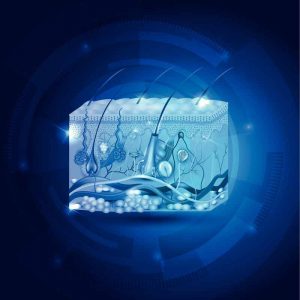 The percent stays the same at 5% of your exam.
The percent stays the same at 5% of your exam.
- Dyshidrosis and Lichen simplex chronicus have been removed from the blueprint.
- Basal cell carcinoma, Kaposi sarcoma, Melanoma, and Squamous cell carcinoma have been combined into one neoplasms section - benigh, malignant, and premalignant.
- The Other Dermatological Conditions section has been reduced and much of the contents have been recategorized, in this section is a new category of photosensitive reactions.
- Spider bites are now part of a new section titled Envenomation’s and arthropod bite reactions.
- New sections include folliculitis, infectious disease, hand foot and mouth disease, parasitic section, keratitis disorders section, pigment disorders section, skin integrity, lacerations, and stasis dermatitis, vascular abnormalities including cherry angioma, telangiectasia, and pemphigus.
3. PANCE Endocrine System 2019 Updates (was 6% is now 7%)
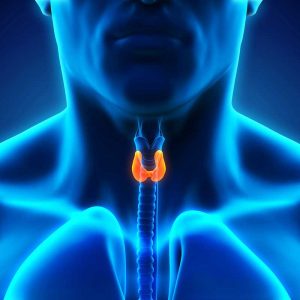 The percentage increases by 1% from 6% to 7% of your PANCE exam.
The percentage increases by 1% from 6% to 7% of your PANCE exam.
- The neoplastic diseases section has been expanded with the addition of four new lessons: Multiple endocrine neoplasia, Neoplastic syndrome, Primary endocrine malignancy, and Syndrome of inappropriate antidiuretic hormone secretion (SIADH).
- The parathyroid disorders have been moved to their own section.
- As mentioned above the lipid disorders section which included both Hypercholesterolemia and Hypertriglyceridemia have been moved to the Cardiology system blueprint.
4. PANCE Eyes, Ears, Nose and Throat 2019 Updates (was 9% is now 7%)
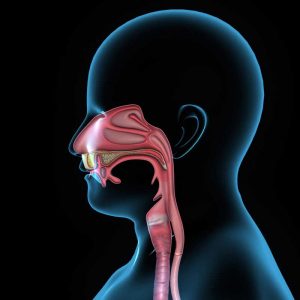 The EENT PANCE content blueprint section has seen some big changes, not in content but in organization. With eye disorders alone seeing the creation of 7 new "subcategories" as follows:
The EENT PANCE content blueprint section has seen some big changes, not in content but in organization. With eye disorders alone seeing the creation of 7 new "subcategories" as follows:
- Conjunctival disorders
- Corneal disorders: new sections infectious and keratitis.
- Lacrimal disorders
- Lid disorders
- Neuro-ophthalmologic disorders
- Traumatic disorders: new section on globe rupture
- Vascular disorders
- Vision abnormalities: with three new sections including amaurosis fugax, amblyopia and scleritis.
Ear disorders also have seen similar subdivision. Now divided into external ear, internal ear, middle disorders, and other abnormalities of the ear with the addition of cerumen impaction and trauma to the blueprint.
Nose and sinus disorders now include a section on trauma and the oropharyngeal disorders section now includes a subsection of infectious/inflammatory disorders, salivary disorders, trauma and other and a new section on deep neck infection.
Removed sections include benign and malignant neoplasms, foreign body, and hematoma of the external ear.
5. PANCE GI/Nutrition 2019 Updates (was 8% is now 7%)
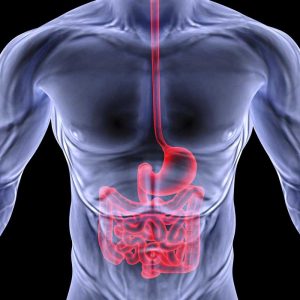 The percentage of GI and Nutrition has decreased by 1% of the PANCE exam.
The percentage of GI and Nutrition has decreased by 1% of the PANCE exam.
The biggest changes are seen in the metabolic disorders section of the blueprint which has now been nicely broken down into four new topics: G6PD deficiency, Paget disease, Phenylketonuria, and Rickets.
Vitamin and nutritional deficiencies have earned a news section titled hyper and hypovitaminosis. We see a new section called food allergies and food sensitivities which include Gluten intolerance and Lactose intolerance, and now includes a new topic "nut allergies." The rectum section has been removed and Abscess/fistula, Anal fissure, Fecal impaction, and Hemorrhoids are now included as part of the section "colorectal disorders."
Obstruction is now broken down into small bowel (SBO) and large bowel obstruction sections, and the neoplasm section which was previously divided into rectal neoplasms, Small intestine neoplasms, esophageal neoplasms, pancreatic neoplasms, hepatic neoplasms and gastric neoplasms is simply benign and malignant.
6. PANCE Genitourinary System 2019 Updates (was 10% is now 5%)
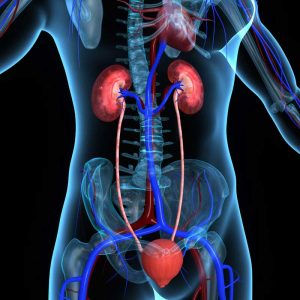 Besides the name change to "Genitourinary Male and Female" the big change (as mentioned above) is the removal of renal from GU and the creation of a new Renal blueprint section. With hat has come some much-needed reorganization into new GU subdivisions.
Besides the name change to "Genitourinary Male and Female" the big change (as mentioned above) is the removal of renal from GU and the creation of a new Renal blueprint section. With hat has come some much-needed reorganization into new GU subdivisions.
- There is a new section titled bladder disorders which includes incontinence plus the addition of two new topics: overactive bladder and bladder prolapse.
- Congenital abnormalities get their own section titled congenital and acquired abnormalities, which includes cryptorchidism along with three new topics, Peyronie disease, trauma, and vesicoureteral reflux.
- There is a new human sexuality section (don't know exactly what to make of this).
- Neoplasms now include penile cancer, and there is a new penile disorders section with a new topic for hypospadias/epispadias.
- There is a new subsection for prostate disorders and testicular disorders.
- A new urethral disorders subsection has been created which includes two new topics: prolapse and stricture.
- All the renal material has been relocated to the new renal section.
7. PANCE Hematologic System 2019 Updates (was 3% is now 7%)
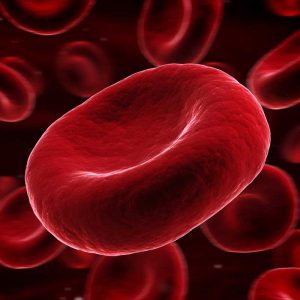 The percentage is up by 2% for the hematology system!
The percentage is up by 2% for the hematology system!
New subsections include:
- Autoimmune disorders
- cytopenias: anemia and leukopenia - which now simplifies/combines most of what has been removed specifically all individual sections previously pertaining to anemia:
- Cytoses: polycythemia and thrombocytosis
- Hemoglobinopathies with a new topic - hemochromatosis
- Immunologic disorders: Transfusion reaction
Once again hematologic malignancies have been changed/revised some with the addition of myelodysplasia.
Also removed from the hematology blueprint are the following two subsystems: Idiopathic thrombocytopenic purpura and Thrombotic thrombocytopenic purpura.
8. PANCE Infectious Disease System 2019 Updates (was 3% is now 6%)
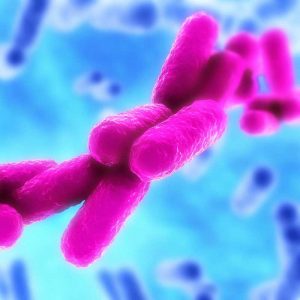 Percentage of the exam has been doubled from 3%-6%.
Percentage of the exam has been doubled from 3%-6%.
Everything from the previous blueprint has been rolled over into the 2018 edition plus the addition of some new lessons. Including Methicillin-resistant Staphylococcus aureus infection, ad a new subsection for prenatal transmission of disorders which includes:
- Congenital varicella
- Herpes simplex virus
- Human papillomavirus
- Zika virus
There is a new section titled Sepsis/systemic inflammatory response syndrome.
9. PANCE Musculoskeletal System 2019 Updates (was 10% is now 8%)
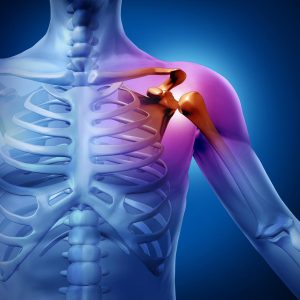 There were some big changes to the musculoskeletal system. Here is all that has been removed and relocated.
There were some big changes to the musculoskeletal system. Here is all that has been removed and relocated.
- Lower back pain
- Disorders of the Hip,
- Disorders of the Shoulder
- Fractures/dislocations
- Soft tissue injuries
- Disorders of the Forearm/Wrist/Hand
- Fractures/dislocations
- Soft tissue injuries
- Disorders of the Knee
- Fractures/dislocations
- Osgood-Schlatter disease
- Soft tissue injuries
- Disorders of the Ankle/Foot
- Fractures/dislocations
- Soft tissue injuries
- Neoplastic Disease
- Bone cysts/tumors
Where did it all go? There are two new all-encompassing sections:
- Lower extremity disorders
- upper extremity disorders
There has been a much needed new section for spinal disorders which the addition of thoracic outlet syndrome, torticollis, and trauma.
There is also a new chest/rib disorders section. And, again, neoplasms are now grouped into one section of both benign and malignant neoplasms.
10. PANCE Neurologic System 2019 Updates (was 6% is now 7%)
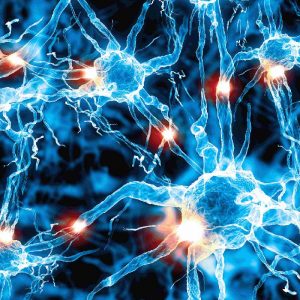 The neurology PANCE blueprint system has increased by one percentage point from six to seven percent.
The neurology PANCE blueprint system has increased by one percentage point from six to seven percent.
Other Neurologic Disorders has been condensed and reorganized with the addition of three new sections:
- Neurocognitive disorders: which includes Delirium and a new topic titled Major/mild neurocognitive disorders
- Neuromuscular disorders
- Neoplasms
Other additions include: a section for closed head injuries with a topic of traumatic brain injuries, a special new section for cranial nerve palsies, encephalopathic disorders, neuromuscular disorders, peripheral nerve disorders including carpal tunnel syndrome, an expansion of seizure disorders which now includes topics specific to focal and generalized seizures and last but not least the addition of arteriovenous malformations to the vascular disorders subsection.
11. PANCE Psychiatry/Behavior Science 2019 Updates (same 6%)
 The psychiatry section percentage of the PANE Blueprint remains at 6%
The psychiatry section percentage of the PANE Blueprint remains at 6%
There are quite a few new additions to the 2019 PANCE blueprint:
- Abuse and neglect: which now includes elder abuse and sexual abuse
- Depressive disorders: Persistent depressive disorders, premenstrual dysphoric disorder
- Disruptive, impulse-control, and conduct disorders
- Dissociative disorders
- Human sexuality
- Obsessive-compulsive and related disorders
- Neurodevelopmental disorders
- Sleep-wake disorders: narcolepsy and parasomnias
- Trama-and stressor-related disorders
- Feeding and eating disorders (previously anorexia nervosa, bulimia nervosa, and obesity)
The following have been removed/update for the 2019 PANCE Blueprint:
- Anorexia nervosa
- Bulimia nervosa
- Obesity
- Mood Disorders
- Dysthymic
- Psychoses
- Delusional disorder
- Schizophrenia
- Abuse
- Dependence
- Withdrawal
- Other Behavior/Emotional Disorders
- Acute reaction to stress
- Child/elder abuse
- Grief reaction
12. PANCE Pulmonary System 2019 Updates (was 12% now 10%)
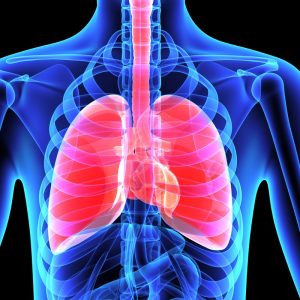 The pulmonary blueprint sees a 10% decrease in percentage from 12% - 10% but overall there were very few changes.
The pulmonary blueprint sees a 10% decrease in percentage from 12% - 10% but overall there were very few changes.
- There was only one topic removed from the pulmonary blueprint (bronchiectasis) although consider it part of the RSV section.
- There was one new addition Sleep apnea/Obesity hypoventilation syndrome other than that, nothing too exciting going on here.
13. PANCE Renal System 2019 (5%)
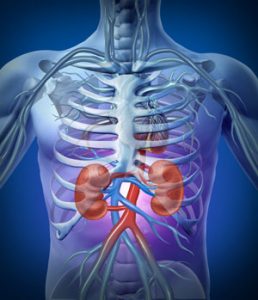 Sorry GU there is a new girl in town and her name is Renal! As mentioned above one of the biggest additions to the 2019 PANCE blueprint is the new renal system blueprint. That being said, it is more of an organizational change than one of content.
Sorry GU there is a new girl in town and her name is Renal! As mentioned above one of the biggest additions to the 2019 PANCE blueprint is the new renal system blueprint. That being said, it is more of an organizational change than one of content.
The new renal system blueprint adds only three new topics:
- Horseshoe kidney
- Dehydration
- Hyperkalemia/hypokalemia
Other than that the rest is pretty much the same renal section we have come to love and know... I.E you still have to memorize acid-base! Arghhh!
14. PANCE Reproductive (Male and Female) 2019 (5%)
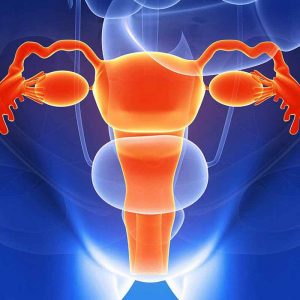 The reproductive system of the PANCE blueprint has decreased by 1%
The reproductive system of the PANCE blueprint has decreased by 1%
The reproductive system of the 2019 blueprint remains much the same, with the addition of breech presentation and cord prolapse to complicated pregnancy, another human sexuality section (if you have been keeping track this is the third - the other are located in GU and Psychiatry.
Neoplasms once again find their new home with the removal and consolidation of all GYN neoplasms ( Breast Cancer, Cervical Cancer, Ovarian neoplasms, Endometrial cancer ) into two sections: benign and malignant.
Gone also are the following topics:
- Dysfunctional uterine bleeding
- Amenorrhea
- Vulvar vaginal neoplasm
- Premenstrual syndrome
- Dysmenorrhea
- Cesarean section
New to the reproductive system are two new disorders of the ovary: Polycystic ovarian syndrome and ovarian torsion, a new trauma subsection which includes physical assault, sexual assault and trauma in pregnancy and a new subsection of uncomplicated pregnancy for prenatal and postnatal care, which I think is a wonderful addition.
The 2019 PANCE Content Blueprint Checklist Preview
As an update to the 2018 version, I have created a developmental version of the 2019 checklist demonstrating the changes with links to corresponding sections.
The official checklist will be released later this year as the new lessons on smartypance.com go live.
You can download the developmental version which includes the 2018 template along with the new changes here.
Download the 2019 Preview


